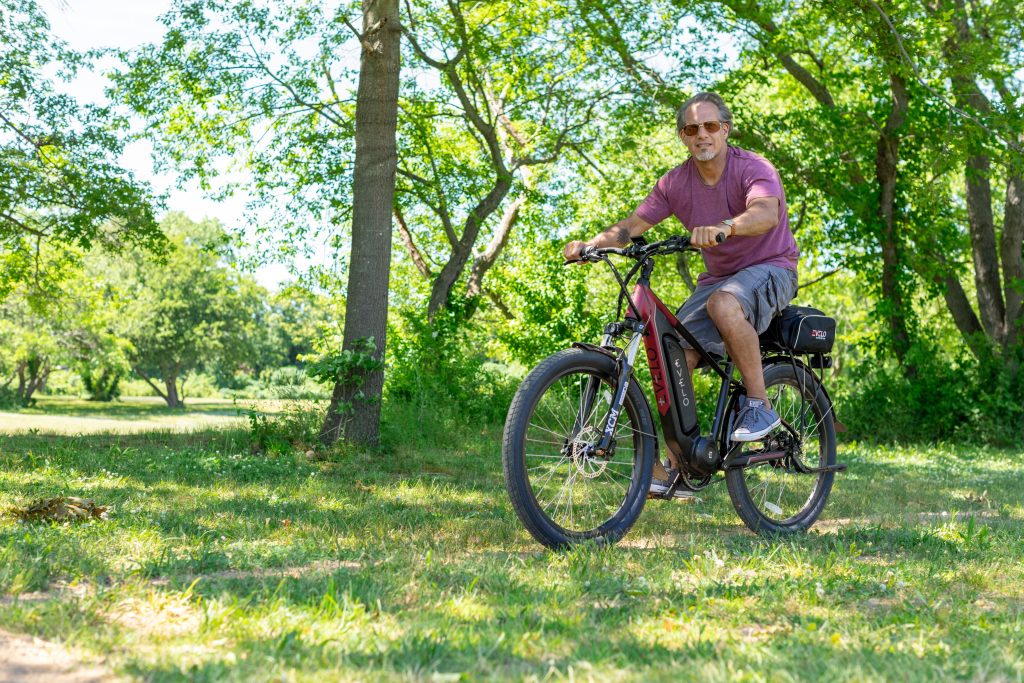Portable electric mini bikes and traditional pedal bicycles are two-wheelers designed to provide riders with more affordable commuting. Cheaper than cars and using public transit, they are both built with parts that make them suitable for moving easily in tight traffic situations. As similar as they may appear in build, they are different in many ways. There are many things to compare, from their design to components and features.
Traditional pedal bikes are the conventional options that require effort for motion. Pushing the pedals allows riders to exercise their muscles and enjoy eco-friendly transportation. Electric bicycles generally retain the pedal function, which users can power using the pedal assist or the throttle. A portable mini e-bike is a lighter and more compact riding option. Like a regular-sized electric bike, it uses a battery and an electric motor that enables users to enjoy more leisurely riding. Here, we explore their respective features, with an insight into the various benefits they offer the user. After reading this article, choosing one for your specific type of commute will be easier.
Benefits of Portable Electric Mini Bikes
Portable electric mini bikes are equipped with features to enable easier commuting, including a rechargeable battery and a motor. There are several benefits to using one for your travels. One is derived from its electric motor, which enables riders to use its throttle system. Activating this makes it easier to accelerate without using physical effort.
Another benefit of using portable mini e-bikes is their frame, which can be restructured for easy carriage and storage. This is due to its foldable design, which can make it appear even much smaller than it already is. When this is done, the bike can be carried in a car, on public transport, or stashed in a locker at work.
The design of a portable electric mini bike makes it highly suitable for all short- and long-distance trips in urban environments. Its compact and smaller size enables riders to use the spaces creatively in tight traffic situations. Since it is lightweight, it can also be conveniently lifted for storage. Instead of leaving the bike parked outside, it can be carried inside for added security.
Benefits of Traditional Pedal Bikes
Traditional pedal bikes were the first option commonly used by cyclists before the advent of electric bikes. Since they rely on physical effort for motion, they are designed to provide a form of exercise that improves cardiovascular health and muscle growth. Generally, riding is a recreational activity that can reduce stress levels and the risk of developing chronic diseases. Consistency can help maintain positive mental health.
Using a traditional bike for your commute is an eco-friendly and sustainable travel method. Unlike a car or other common transit options, it does not require gas or other fuels to power its motor for motion. This lack of reliance on fossil fuels reduces your gas station trips and expenses, which saves money in the long run.
Aside from reducing your fuel dependency, traditional bikes are affordable transportation. Compared to cars, other vehicles, motorcycles, and even electric bikes, they are generally sold at a much lower price. They are a cheaper alternative to this, down to the cost of repairs.
Key Features and Considerations for Each Type
There are several similarities and differences in the features of each bike type. They are equipped with parts and components to consider for varying riding experiences. These include the following:
Size and Weight
Portable electric mini bikes are designed to be more compact and lightweight than even regular e-bikes that are already convenient to carry. The Himiway Pony, for example, weighs only 35 lbs. It uses a foldable frame which allows easier storage. Traditional bicycles come in different sizes and weights. These can range from regular-sized commuting options to much heavier mountain bikes.
Battery Life and Charging Time
Traditional bicycles do not use a battery, unlike portable electric mini bikes. This means they are not built to provide pedal assistance during complicated parts of your commute. A portable e-bike like the Pony uses a 36V 10Ah battery that can cover a 55-mile range when it is full. This can be charged to completion within 2 – 3 hours, reducing the time spent charging between rides.
Terrain and Riding Conditions
Traditional bicycles come in different designs that provide varying levels of comfort and control as you ride across different terrains. The only thing is they all require additional effort when riding up steep inclines, on rough ground, and against headwinds. On the other hand, portable mini e-bikes are designed for convenient commuting on urban areas’ paved and unpaved roads. They can easily get you to work, the store, or around your city.
Cost and Maintenance
Traditional bicycles vary in price, depending on the brand and type. Regular maintenance, including oil changes and tune-ups, is required. However, due to the lack of electrical components, they are generally less expensive to maintain than e-bikes. A portable electric mini bike can cost more, but it tends to last longer and requires way less maintenance than the traditional type.
Comparison of Riding Experience
The riding experience on both bike types is different during use. A traditional bicycle can promote overall health by providing a more intense physical workout. Its lack of electrical components to support the rider means physical effort is required to enjoy any motion. This can be a stressful and sweaty way to commute in an urban area. However, traditional bikes suit those who prefer a tougher or more intense commute or exercise.
A portable electric mini bike is designed to enhance commuters’ riding experience in urban areas with heavy traffic and limited parking spaces. Using one can help you enjoy stress-free trips to places you frequent, like the office and store. Its compact and foldable design suits people who use other personal and public transit options. With its only limitation being rugged terrain, it provides stress-free and non-sweaty rides across paved and unpaved city roads.
Conclusion
Traditional pedal bicycles and portable electric mini bikes are both suitable for enjoying better commuting in urban areas. Both are affordable and have an almost similar build, but they use different designs and components to provide a unique riding experience. Traditional bicycles require physical effort for motion and are ideal for those needing workout equipment over a transit option. Portable electric mini bikes use a battery, motor, and propulsion system, which work together to help riders commute without physical effort. Both can help you achieve your health and fitness goals while getting you to your destination faster. Your choice should be based on your specific riding needs. This way, you can enjoy a beneficial riding experience.





